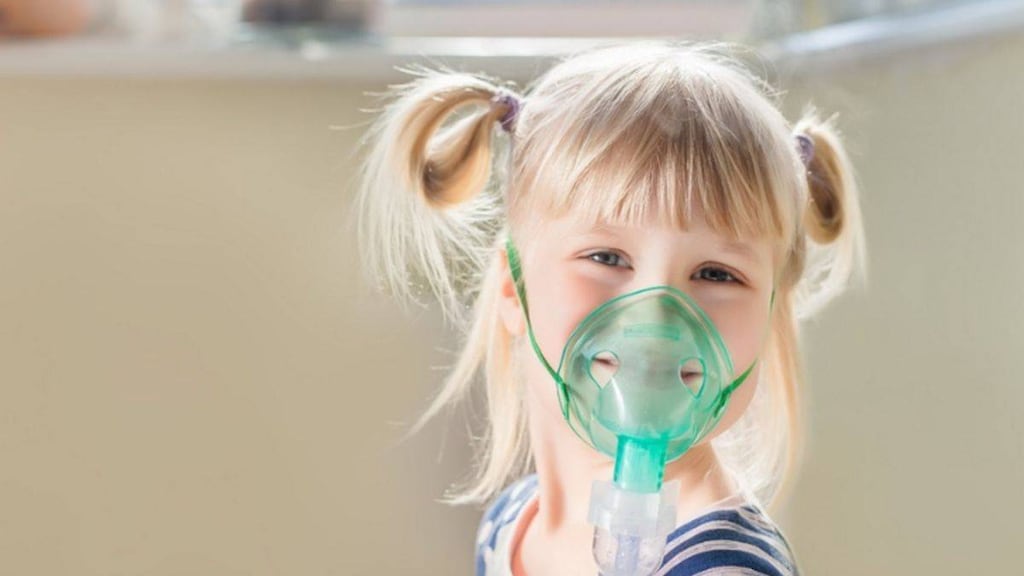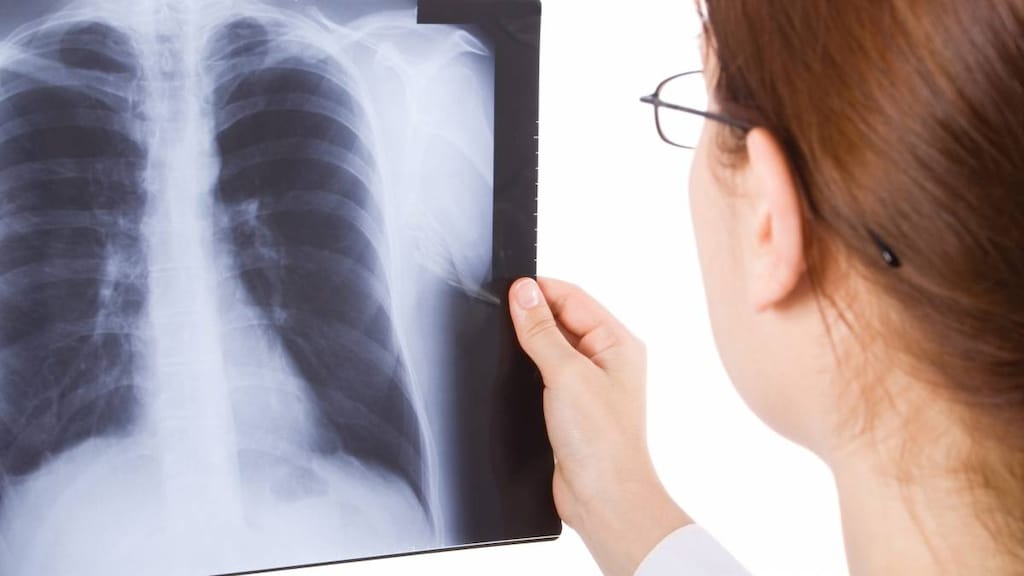What is olodaterol used for?
- Olodaterol is used to treat COPD (chronic obstructive pulmonary disease).
- This medicine is not to be used to treat intense flare-ups of shortness of breath. Use a rescue inhaler. Talk with the doctor.
Before taking olodaterol, tell your doctor:
- If you are allergic to olodaterol; any part of this medicine; or any other drugs, foods, or substances. Tell your doctor about the allergy and what signs you had.
- If you have asthma.
- If you are using another drug like this one. If you are not sure, ask your doctor or pharmacist.
- If the patient is a child. Do not give olodaterol to a child.
This is not a list of all drugs or health problems that interact with olodaterol.
Tell your doctor and pharmacist about all of your drugs (prescription or OTC, natural products, vitamins) and health problems. You must check to make sure that it is safe for you to take olodaterol with all of your drugs and health problems. Do not start, stop, or change the dose of any drug without checking with your doctor.
What are some things I need to know or do while I take olodaterol?
- Tell all of your health care providers that you take olodaterol. This includes your doctors, nurses, pharmacists, and dentists.
- If you have high blood sugar (diabetes), olodaterol may sometimes raise blood sugar. Talk with your doctor about how to keep your blood sugar under control.
- Call your doctor right away if your breathing problems get worse, if your rescue inhaler does not work as well, or if you need to use your rescue inhaler more often.
- Do not take more of olodaterol or use it more often than you have been told. Deaths have happened when too much of this type of drug has been taken. Talk with your doctor.
- Drugs like this one may raise the chance of asthma-related deaths in people with asthma who do not also use an inhaled steroid. It appears that this effect does not apply to people with COPD. If you have questions, talk with the doctor.
- This medicine is not approved to treat asthma. Talk with your doctor.
- Tell your doctor if you are pregnant, plan on getting pregnant, or are breast-feeding. You will need to talk about the benefits and risks to you and the baby.
How is olodaterol best taken?
Use olodaterol as ordered by your doctor. Read all information given to you. Follow all instructions closely.
- For breathing in only by an inhaler into the lungs.
- Keep out of your eyes.
- Keep using olodaterol as you have been told by your doctor or other health care provider, even if you feel well.
- Use olodaterol at the same time of day.
- Before first use, put the cartridge into the inhaler.
- Prepare the inhaler before first use. Spray towards the ground until mist is seen. Once the mist is seen, spray 3 more times. If it has been more than 3 days since it has been used, spray once at the ground. If not used in more than 21 days, you will need to prepare the inhaler again. Spray until mist is seen then spray 3 more times.
- Put the cap back on after you are done using your dose.
- Follow how to clean carefully.
- After all sprays have been used, the inhaler will lock.
- If you are using more than 1 inhaled drug, ask the doctor which drug to use first.
- Use new inhaler with each refill.
What do I do if I miss a dose?
- Take a missed dose as soon as you think about it on the same day you missed the dose.
- If you do not think about the missed dose until the next day, skip the missed dose and go back to your normal time.
- Do not use more than 1 time a day.
What are the side effects of olodaterol that I need to call my doctor about immediately?
WARNING/CAUTION: Even though it may be rare, some people may have very bad and sometimes deadly side effects when taking a drug. Tell your doctor or get medical help right away if you have any of the following signs or symptoms that may be related to a very bad side effect:
- Signs of an allergic reaction, like rash; hives; itching; red, swollen, blistered, or peeling skin with or without fever; wheezing; tightness in the chest or throat; trouble breathing, swallowing, or talking; unusual hoarseness; or swelling of the mouth, face, lips, tongue, or throat.
- Signs of high blood sugar like confusion, feeling sleepy, more thirst, more hungry, passing urine more often, flushing, fast breathing, or breath that smells like fruit.
- Signs of low potassium levels like muscle pain or weakness, muscle cramps, or a heartbeat that does not feel normal.
- Signs of high blood pressure like very bad headache or dizziness, passing out, or change in eyesight.
- Signs of a urinary tract infection (UTI) like blood in the urine, burning or pain when passing urine, feeling the need to pass urine often or right away, fever, lower stomach pain, or pelvic pain.
- Chest pain or pressure.
- Fast or abnormal heartbeat.
- Very nervous and excitable.
- Shakiness.
- This medicine can cause very bad breathing problems right after you take a dose. Sometimes, this may be life-threatening. If you have trouble breathing, breathing that is worse, wheezing, or coughing after using olodaterol, use a rescue inhaler and get medical help right away.
What are some other side effects of olodaterol?
All drugs may cause side effects. However, many people have no side effects or only have minor side effects. Call your doctor or get medical help if any of these side effects or any other side effects bother you or do not go away:
- Nose or throat irritation.
- Signs of a common cold.
- Dizziness.
- Diarrhea.
- Back pain.
- Joint pain.
These are not all of the side effects that may occur. If you have questions about side effects, call your doctor. Call your doctor for medical advice about side effects.
You may report side effects to the FDA at 1-800-332-1088. You may also report side effects at https://www.fda.gov/medwatch.
If overdose is suspected:
If you think there has been an overdose, call your poison control center or get medical care right away. Be ready to tell or show what was taken, how much, and when it happened.
How do I store and/or throw out olodaterol?
- Store at room temperature. Do not freeze.
- Store in a dry place. Do not store in a bathroom.
- After putting together, throw away the inhaler 3 months after first use or when the inhaler locks.
- Keep all drugs in a safe place. Keep all drugs out of the reach of children and pets.
- Throw away unused or expired drugs. Do not flush down a toilet or pour down a drain unless you are told to do so. Check with your pharmacist if you have questions about the best way to throw out drugs. There may be drug take-back programs in your area.
Consumer information use and disclaimer
- If your symptoms or health problems do not get better or if they become worse, call your doctor.
- Do not share your drugs with others and do not take anyone else's drugs.
- This medicine comes with an extra patient fact sheet called a Medication Guide. Read it with care. Read it again each time olodaterol is refilled. If you have any questions about olodaterol, please talk with the doctor, pharmacist, or other health care provider.
- If you think there has been an overdose, call your poison control center or get medical care right away. Be ready to tell or show what was taken, how much, and when it happened.
This information should not be used to decide whether or not to take olodaterol or any other medicine. Only the healthcare provider has the knowledge and training to decide which medicines are right for a specific patient. This information does not endorse any medicine as safe, effective, or approved for treating any patient or health condition. This is only a brief summary of general information about this medicine. It does NOT include all information about the possible uses, directions, warnings, precautions, interactions, adverse effects, or risks that may apply to olodaterol. This information is not specific medical advice and does not replace information you receive from the healthcare provider. You must talk with the healthcare provider for complete information about the risks and benefits of using this medicine.




